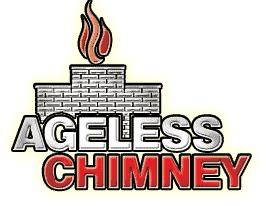Fireplace Cleaning in Alphabet City, NY
What our clients say




Read About Us
Browse Fireplace Services
contact us
How Residential Fireplace Cleaning Enhances Home Value in Alphabet City NY

The Importance of Fireplace Cleaning
Regular fireplace cleaning is crucial for maintaining the safety and efficiency of your home. In Alphabet City, NY, homeowners understand the value of a clean fireplace. A neglected fireplace can become a serious fire hazard due to creosote buildup, which is highly flammable. Keeping your fireplace clean reduces the risk of chimney fires and ensures a safer living environment for your family.
Moreover, a clean fireplace operates more efficiently, providing better heat output and reducing energy costs. A well-maintained fireplace can also enhance the overall value of your home. In New York City, many buyers are attracted to homes with fireplaces, and a clean, well-functioning fireplace can be a significant selling point. Ageless Chimney offers comprehensive cleaning services to help you maintain your fireplace in excellent condition, adding value and comfort to your home.
Experienced Professionals
Our team has years of experience in residential fireplace cleaning, ensuring the highest quality service for your home in New York City.
Customer Satisfaction
We prioritize customer satisfaction, providing reliable and thorough cleaning services. Our clients in Alphabet City, NY trust us for our commitment to excellence.
Safety First
Safety is our top priority. We use advanced techniques to ensure your fireplace is safe, giving you peace of mind. Contact Ageless Chimney at 516-795-1313 for more information.

Benefits of Professional Fireplace Cleaning
Professional fireplace cleaning offers numerous essential benefits for maintaining a safe and efficient home. First, it ensures the removal of harmful creosote buildup, a major cause of chimney fires. In Alphabet City, NY, this preventive measure is particularly important, especially for homes with frequent fireplace use.
Secondly, regular cleaning by professionals improves the efficiency of your fireplace. A clean fireplace burns more efficiently, providing better heat output and reducing energy costs. Homeowners in Alphabet City, NY, will notice a significant difference in their heating efficiency, leading to lower energy bills and a more comfortable living environment. Ageless Chimney uses specialized equipment and techniques to ensure thorough cleaning, maximizing your fireplace’s performance.
Lastly, professional fireplace cleaning extends the lifespan of your fireplace. Over time, soot and debris can cause deterioration and damage. In New York City, many homes feature fireplaces as a key selling point; maintaining them is crucial for preserving their value. By investing in regular cleaning services from Ageless Chimney, you enhance your home’s safety and efficiency and its market appeal, ensuring your fireplace remains a valuable asset for years to come.

Our Comprehensive Cleaning Process
At Ageless Chimney, we follow a meticulous cleaning process to ensure your fireplace is in optimal condition. Our service begins with a thorough inspection, during which our experienced technicians assess the fireplace and chimney for potential issues. This initial step is crucial for identifying any damage or blockages that must be addressed.
Next, we proceed with the cleaning process, which involves removing all soot, creosote, and debris from the fireplace and chimney. We use industry-leading tools and techniques to ensure a comprehensive clean, significantly reducing the risk of chimney fires and improving indoor air quality. Residents in Alphabet City, NY can trust that our methods are effective and safe.
Finally, we conduct a post-cleaning inspection to ensure everything is in perfect condition. This step allows us to confirm that all issues have been addressed and that your fireplace is ready for use. Our commitment to quality service means homeowners in Alphabet City, NY, can rely on Ageless Chimney for thorough and professional fireplace cleaning. Contact us today at 516-795-1313 to schedule your service and keep your fireplace in shape.
Have a question?
Alphabet City is a neighborhood located within the East Village in the New York City borough of Manhattan. Its name comes from Avenues A, B, C, and D, the only avenues in Manhattan to have single-letter names. It is bounded by Houston Street to the south and 14th Street to the north, and extends roughly from Avenue A to the East River. Some famous landmarks include Tompkins Square Park, the Nuyorican Poets Cafe and the Charlie Parker Residence.
